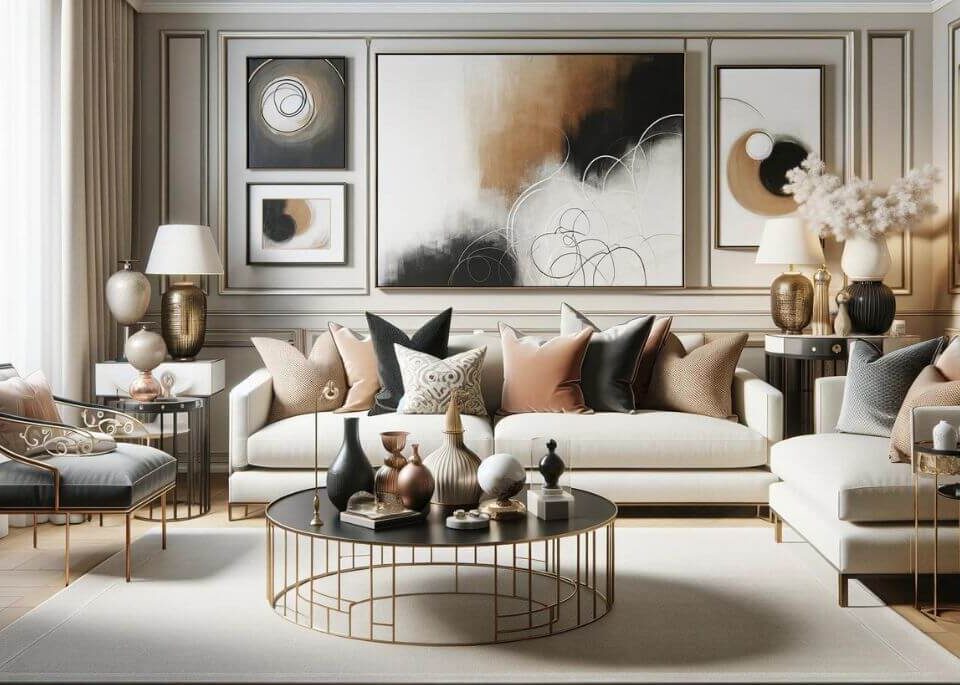
Dive into Specialized Areas of Interior Design: Residential, Commercial and Hospitality Spaces
August 14, 2023
The Transformation of Interior Design with 3D Modeling
August 16, 2023The Art of Sketching in Interior Design
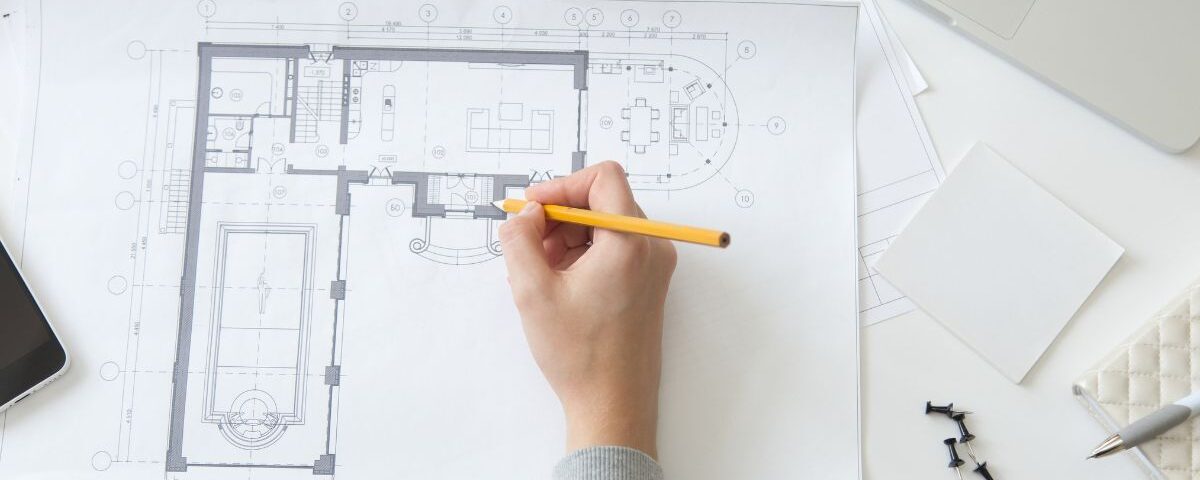
The ability to convey a vision or idea is crucial in interior design. Among the various tools that designers use, sketching is one of the most fundamental. Despite the advent of advanced digital tools the art of sketching in interior design continues to hold a special place.
Table of Contents
Introduction to Sketching in Interior Design
Sketching is a powerful method of communication in the world of interior design. It allows designers to translate their ideas and concepts into visual forms that clients, colleagues and other stakeholders can understand. It also plays a crucial role in the design process, helping designers to explore ideas, make alterations and finalize designs.
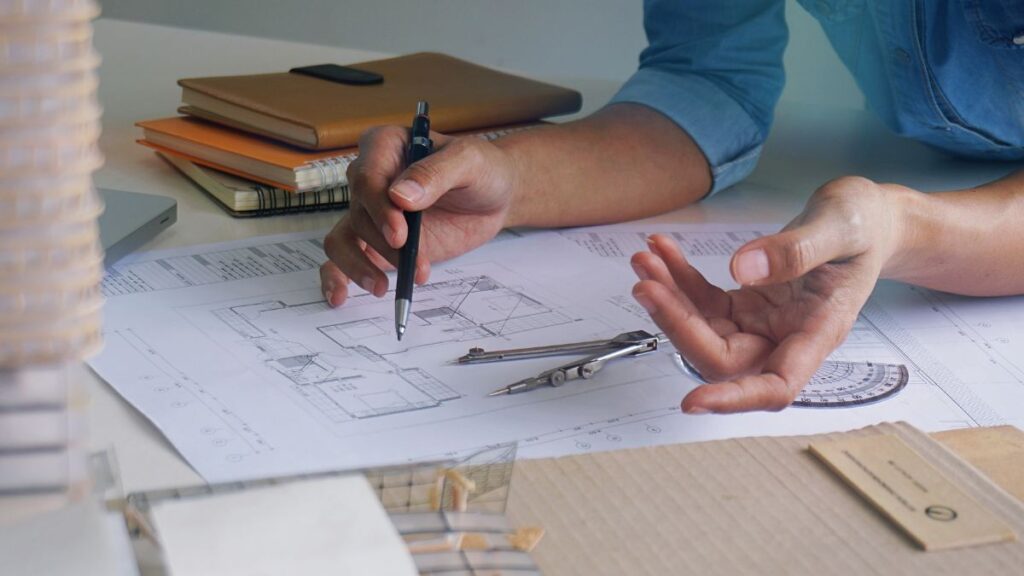
Importance of Sketching in the Design Process
While there are a variety of ways to present design ideas sketching offers a unique combination of speed, flexibility and creativity. Sketches are often the first tangible representation of a designer’s ideas. They allow designers to quickly test and iterate concepts, making changes and refinements as necessary. This iterative process often leads to more innovative and effective designs.
Sketching Vs. Digital Tools
With the rise of digital tools such as CAD software, 3D modeling, and virtual reality, one might wonder if sketching still has a place in the modern design process. While these digital tools offer precision and a high level of detail, they can also be time-consuming and require a significant investment in learning and software. In contrast, sketching is quick, intuitive, and can be done with minimal equipment. As such, many designers find sketching to be a valuable part of their toolkit, often using it in conjunction with digital tools.
Sketching Techniques in Interior Design
As with any skill, effective sketching in interior design requires practice and knowledge of various techniques. From basic sketching techniques to more advanced methods, each approach can be used to convey different aspects of a design.
Basic Sketching Techniques
Basic sketching techniques include things like line drawing, shading, and perspective. These techniques allow designers to quickly capture the basic layout of a space, the placement of furniture, and the general mood.
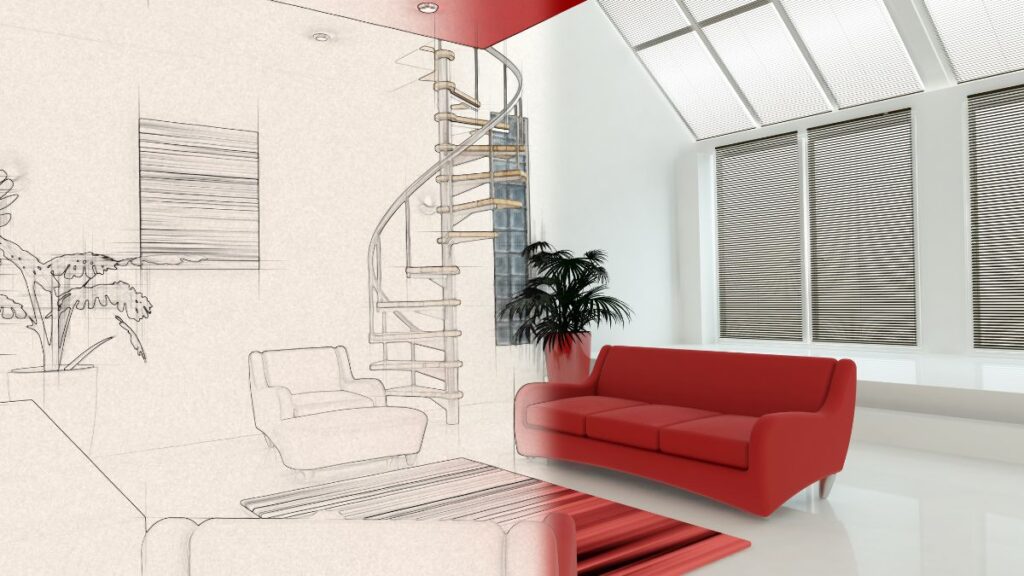
Advanced Sketching Techniques
Moving onto more advanced techniques, these can include things like using different types of media, detailed rendering, and using color to enhance a sketch. Advanced sketching techniques can help to portray more complex design elements like material choices, light distribution, and reflections. They can provide a more immersive view of the design, helping clients to better visualize the finished space.
Tools for Sketching in Interior Design
The choice of sketching tools can greatly influence the final product. Different tools can offer different levels of detail, precision and aesthetic feel. From traditional to modern tools, it’s important for designers to experiment with various options to find what works best for them.
Traditional Sketching Tools
Traditional sketching tools include pencils, pens, markers and paper. Different types of pencils and pens can be used to create different effects, while different types of paper can influence the overall look and feel of the sketch. Many designers also use tools like erasers and smudge sticks to refine their sketches.
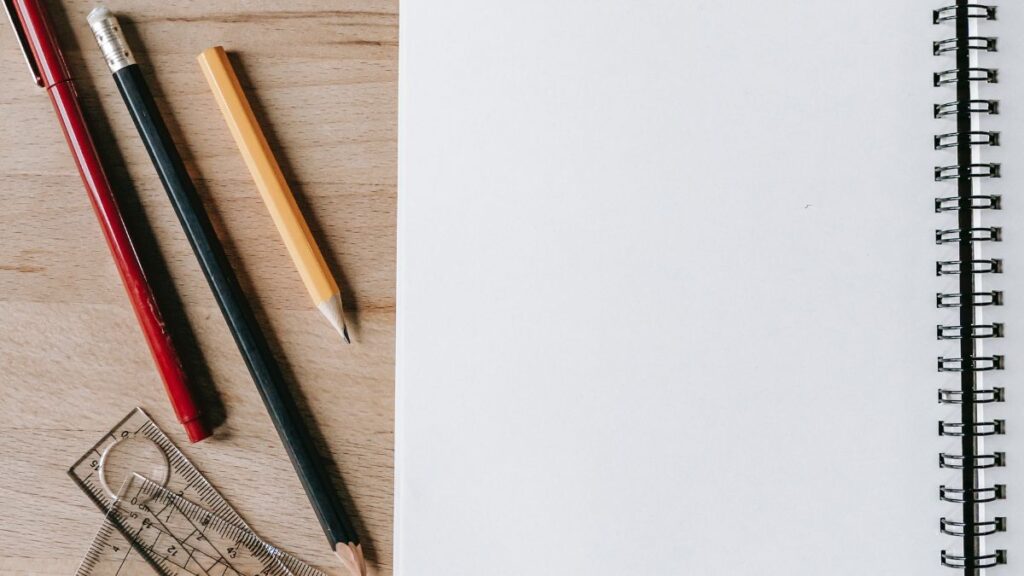
Modern Sketching Tools
In the modern age, sketching is not just confined to pen and paper. Many designers are embracing digital sketching tools like graphic tablets and digital pens, which offer additional capabilities such as layers, infinite undo, and the ability to easily share and edit sketches digitally.

How to Improve Your Sketching Skills
Improving sketching skills is a matter of practice and continuous learning. Even the most experienced designers can benefit from further developing their sketching skills.
Practice Techniques
The key to improving any skill is regular practice. This could involve dedicating a set amount of time each day to sketching, or making a point to sketch out ideas and concepts regularly as part of the design process. In addition to this, studying the work of other designers and artists can provide inspiration and insight.
Attend Workshops and Courses
Another way to improve sketching skills is by attending workshops or taking courses. These can provide structured learning and the opportunity to receive feedback from experienced professionals. Online platforms offer numerous courses tailored specifically to sketching for interior design.
Case Study: Successful Sketching in Interior Design
To further emphasize the importance of sketching in interior design, let’s take a look at some real-world examples. Whether it’s commercial or residential design, sketching plays a crucial role in bringing design concepts to life.
Sketching in Commercial Design
In commercial design, sketching can help to quickly convey a complex design concept. For example, a designer working on a new restaurant layout might use sketches to show the arrangement of tables, the flow of traffic through the space, and the location of key features like the bar or kitchen.
Sketching in Residential Design
Similarly, in residential design, sketches can help clients to visualize how their home will look. From the placement of furniture to the selection of finishes, a well-executed sketch can give clients a clear vision of the final result, helping to ensure their satisfaction with the design.
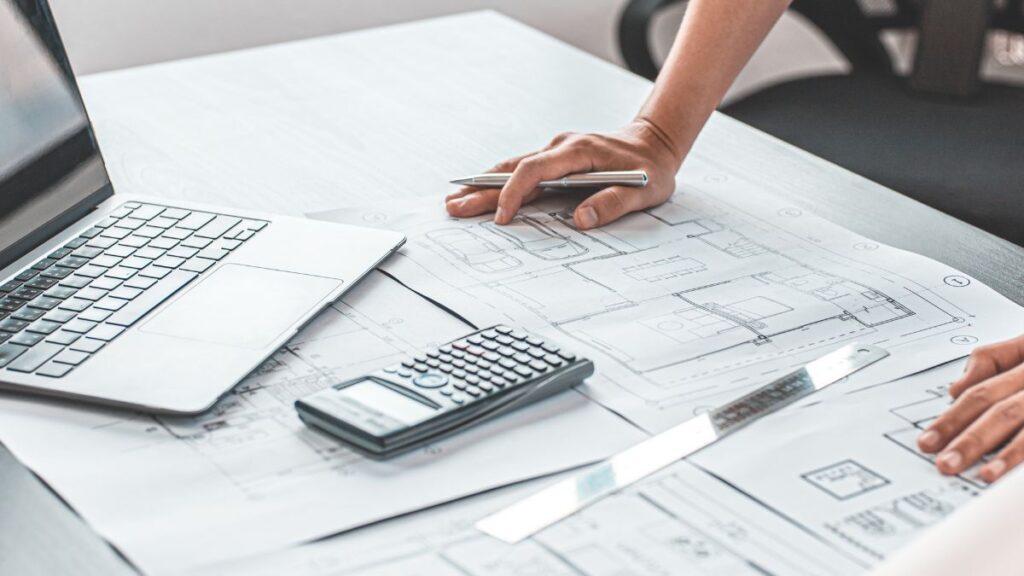
The Future of Sketching in Interior Design
Despite the rise of digital tools, the art of sketching remains integral to the field of interior design. In fact, the future of sketching looks bright, with new tools and techniques continually emerging.
Integrating Sketching with Digital Tools
As we look towards the future, one trend is the increasing integration of traditional sketching with digital tools. This can offer the best of both worlds the speed and flexibility of sketching, combined with the precision and functionality of digital tools. Designers can sketch out ideas on paper, then scan and refine them digitally, or use digital sketching tools to create detailed renderings.
Continuing Relevance of Sketching in the Industry
While technologies continue to evolve, the skill of sketching continues to hold value in the interior design industry. It provides an immediate, tangible means of communicating ideas that digital tools sometimes cannot replicate. As such, sketching is likely to remain a foundational skill for interior designers, both now and in the future.
Key Takeaways: Essential Insights on Sketching in Interior Design
Sketching remains a cornerstone of interior design, offering a unique blend of speed, flexibility, and creativity that is unmatched by digital tools alone. It is both a fundamental skill for new designers and a continual area of growth for seasoned professionals. The evolution of sketching integrates traditional practices with modern digital advancements, promising an exciting future for design expression and communication.
Conclusion
In conclusion, the art of sketching in interior design plays a crucial role in the design process. It offers a way for designers to quickly and creatively express their ideas, contributing to better design outcomes. Whether used alone or in combination with digital tools, sketching is a skill that every interior designer should strive to master.
FAQs
1. What basic sketching techniques should every interior designer know?
Every interior designer should be familiar with line drawing, shading, and perspective. These basic techniques help in quickly depicting the spatial arrangements and mood of an interior space, which are crucial for initial design phases.
2. Why is sketching important in interior design?
Sketching is a quick and intuitive way for interior designers to communicate their ideas. It allows for rapid iteration and experimentation, leading to more innovative and effective designs.
3. Can I be an interior designer if I can’t sketch well?
While sketching is a valuable skill, it’s not the only tool in a designer’s toolkit. Many successful designers use a combination of sketching, digital tools and other methods to present their ideas. Improving your sketching skills can enhance your abilities as a designer, but it’s not a prerequisite for success in the field.
4. What tools do I need to start sketching in interior design?
At a basic level, all you need is a pencil and paper. However, many designers also use other tools such as pens, markers, and sketchbooks with different types of paper. Modern sketching tools can include digital tablets and styluses.
5. How can I improve my sketching skills?
Improvement comes with practice. Regularly sketching can help refine your skills. Additionally, workshops, courses and learning from other designers can also contribute to your development.
6. What is the future of sketching in interior design?
Despite the rise of digital tools, sketching remains a fundamental skill in interior design. The future will likely see an increase in the integration of traditional sketching with digital tools, offering new possibilities for creative expression.
7. What is the role of sketching in the interior design process?
Sketching serves as a primary tool for interior designers to express and refine their concepts quickly and effectively. It facilitates communication with clients and colleagues, allowing for easy alterations and iterative improvements, which often result in more innovative designs.
8. How does sketching compare to using digital tools in interior design?
While digital tools like CAD software and 3D modeling offer precision and detail, they can be time-consuming and require a significant learning curve. Sketching, on the other hand, is quick, intuitive, and requires minimal equipment, making it an essential skill for capturing and communicating initial ideas.
9. Are there advanced sketching techniques that can improve a designer’s presentation?
Yes, advanced techniques such as detailed rendering, using color, and experimenting with various media can enhance the visual impact of a design sketch. These methods help in portraying complex elements like textures, lighting, and reflections, providing a more detailed and immersive view of the intended design.
10. What traditional tools are used in sketching for interior design?
Traditional sketching tools include pencils, pens, markers, and various types of paper. These tools can be used to achieve different textures and depths in sketches. Erasers and smudge sticks are also common for refining the sketches.
11. What are some modern tools that interior designers use for sketching?
Modern sketching tools extend to digital realms, including graphic tablets and digital pens, which offer features like layers, infinite undo, and easy sharing capabilities. These tools allow for more flexibility and precision in refining and presenting sketches.
12. How can interior designers improve their sketching skills?
Improving sketching skills involves regular practice and continuous learning. Designers can enhance their skills by dedicating time to sketch daily, participating in workshops, and taking courses focused on sketching techniques for interior design.
13. Can sketching be integrated with digital tools in modern interior design?
Yes, integrating sketching with digital tools is a growing trend. Designers often start with hand sketches to quickly capture ideas and then use digital tools to refine and elaborate the designs, combining the best of both techniques for enhanced creativity and efficiency.
14. Why is sketching still relevant in interior design despite the advancements in technology?
Sketching remains relevant because it provides a direct and spontaneous way to express and explore design ideas. Unlike digital tools, sketching allows designers to quickly capture and communicate the essence of their ideas, making it an indispensable part of the creative process.
15. What future trends are expected in sketching techniques for interior design?
The future of sketching in interior design looks towards further integration with digital tools, allowing designers to leverage the spontaneity of sketching with the precision of digital techniques. This integration will likely lead to new tools and methods that enhance both the process and the presentation of interior design projects.
Navigate the digital frontier of design with our exploration of Exploring Computer-Aided Design (CAD) in Interior Design, unveiling how technology is revolutionizing the design process and empowering professionals with precision and efficiency.

